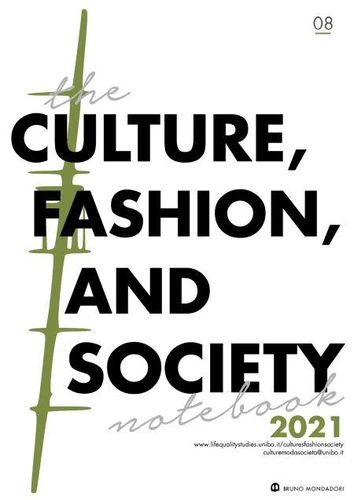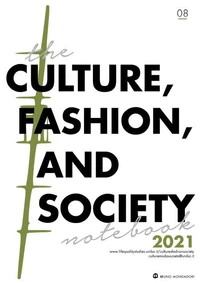The Jewellery of African Gods: Paramentos in the Candomblés of São Paulo
Par :Formats :
Disponible dans votre compte client Decitre ou Furet du Nord dès validation de votre commande. Le format PDF est :
- Compatible avec une lecture sur My Vivlio (smartphone, tablette, ordinateur)
- Compatible avec une lecture sur liseuses Vivlio
- Pour les liseuses autres que Vivlio, vous devez utiliser le logiciel Adobe Digital Edition. Non compatible avec la lecture sur les liseuses Kindle, Remarkable et Sony
 , qui est-ce ?
, qui est-ce ?Notre partenaire de plateforme de lecture numérique où vous retrouverez l'ensemble de vos ebooks gratuitement
Pour en savoir plus sur nos ebooks, consultez notre aide en ligne ici
- FormatPDF
- ISBN978-88-6774-387-2
- EAN9788867743872
- Date de parution13/12/2021
- Protection num.Digital Watermarking
- Taille282 Ko
- Infos supplémentairespdf
- ÉditeurBruno Mondadori
Résumé
In public Candomblé rites and practices, initiates use paramentos while dancing in a trance, which underlie divine archetypes and have been documented by several authors. While these studies are sources for producing paramentos, establishing aesthetic patterns, some changes are evident. In this context, this paper correlates the paramentos, different sets of jewellery and insignias used to represent the òrì?à, to the concept of fashion.
In analysing the paramentos used from the second half of the 20th century until today by the Candomblés Kétu-Nagô in the city of São Paulo, I found variations in materials, shapes and prints. Such changes reflect: the decades in which these paramentos were used; who was the priest or priestess of these Candomblés; the technology of the materials in São Paulo; the exchange of information and imports from Africa; the economic context; and the development of an atelier.
Using photographs, interviews and reference literature, I discuss two dichotomies: a) following a traditional style of paramentos or seeking more contemporary adaptations; and b) following the collective aesthetic standard established by Candomblé houses or aiming for an originality that is ewà, beautiful. From this search for renewal and the social language of clothing, I show how the jewellery that adorns African gods can also be influenced by fashion systems.
In analysing the paramentos used from the second half of the 20th century until today by the Candomblés Kétu-Nagô in the city of São Paulo, I found variations in materials, shapes and prints. Such changes reflect: the decades in which these paramentos were used; who was the priest or priestess of these Candomblés; the technology of the materials in São Paulo; the exchange of information and imports from Africa; the economic context; and the development of an atelier.
Using photographs, interviews and reference literature, I discuss two dichotomies: a) following a traditional style of paramentos or seeking more contemporary adaptations; and b) following the collective aesthetic standard established by Candomblé houses or aiming for an originality that is ewà, beautiful. From this search for renewal and the social language of clothing, I show how the jewellery that adorns African gods can also be influenced by fashion systems.
In public Candomblé rites and practices, initiates use paramentos while dancing in a trance, which underlie divine archetypes and have been documented by several authors. While these studies are sources for producing paramentos, establishing aesthetic patterns, some changes are evident. In this context, this paper correlates the paramentos, different sets of jewellery and insignias used to represent the òrì?à, to the concept of fashion.
In analysing the paramentos used from the second half of the 20th century until today by the Candomblés Kétu-Nagô in the city of São Paulo, I found variations in materials, shapes and prints. Such changes reflect: the decades in which these paramentos were used; who was the priest or priestess of these Candomblés; the technology of the materials in São Paulo; the exchange of information and imports from Africa; the economic context; and the development of an atelier.
Using photographs, interviews and reference literature, I discuss two dichotomies: a) following a traditional style of paramentos or seeking more contemporary adaptations; and b) following the collective aesthetic standard established by Candomblé houses or aiming for an originality that is ewà, beautiful. From this search for renewal and the social language of clothing, I show how the jewellery that adorns African gods can also be influenced by fashion systems.
In analysing the paramentos used from the second half of the 20th century until today by the Candomblés Kétu-Nagô in the city of São Paulo, I found variations in materials, shapes and prints. Such changes reflect: the decades in which these paramentos were used; who was the priest or priestess of these Candomblés; the technology of the materials in São Paulo; the exchange of information and imports from Africa; the economic context; and the development of an atelier.
Using photographs, interviews and reference literature, I discuss two dichotomies: a) following a traditional style of paramentos or seeking more contemporary adaptations; and b) following the collective aesthetic standard established by Candomblé houses or aiming for an originality that is ewà, beautiful. From this search for renewal and the social language of clothing, I show how the jewellery that adorns African gods can also be influenced by fashion systems.





